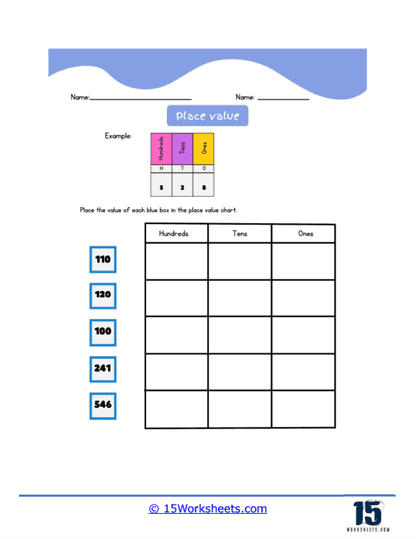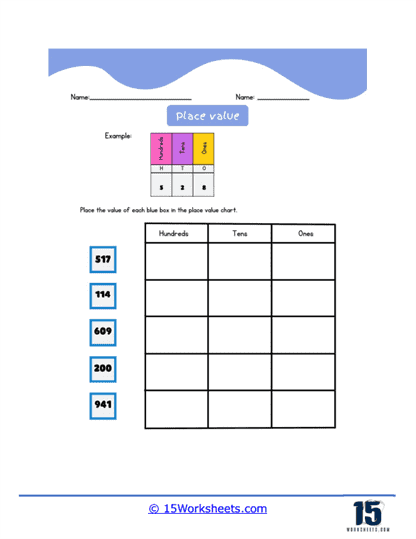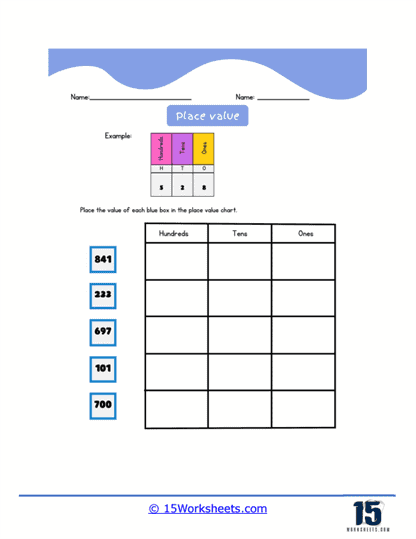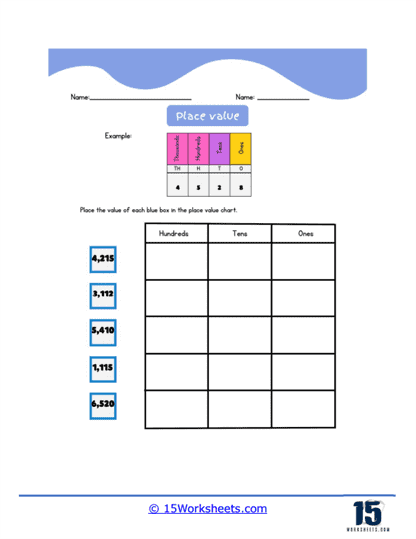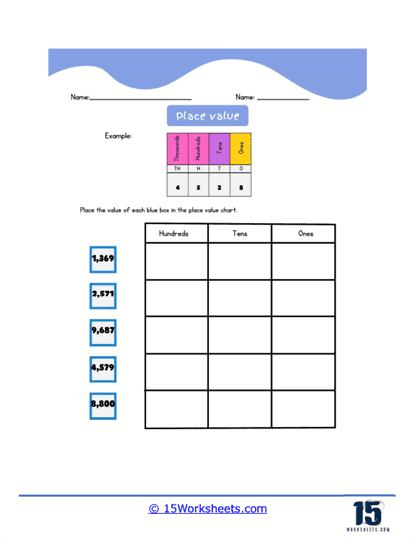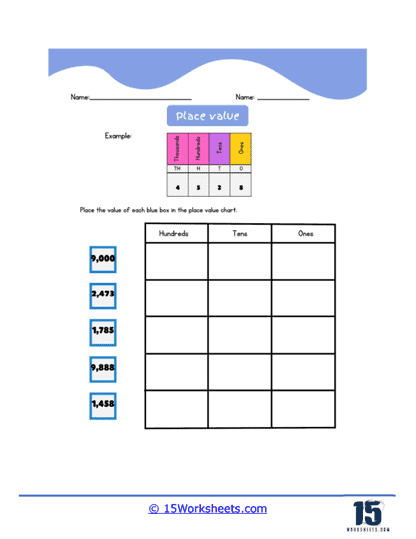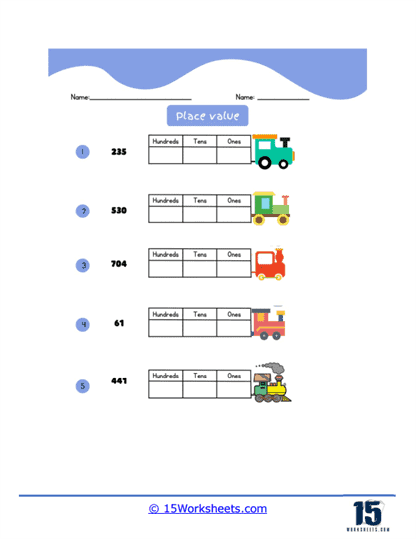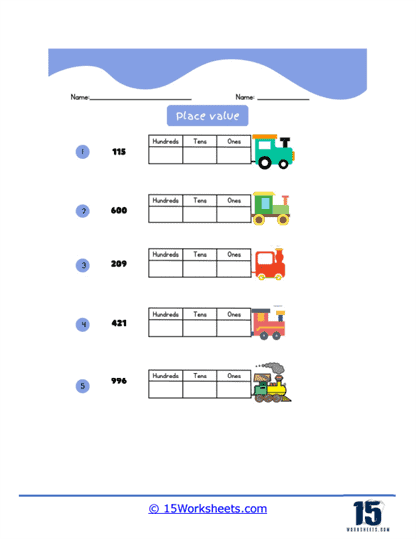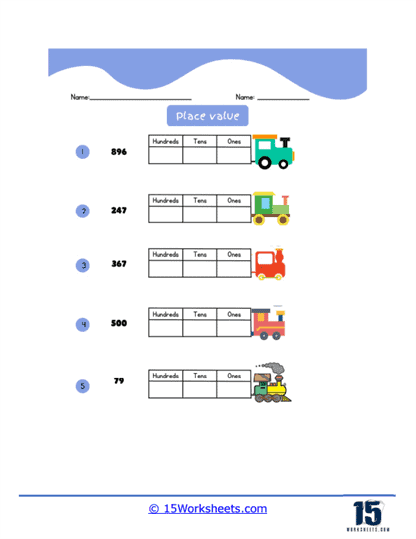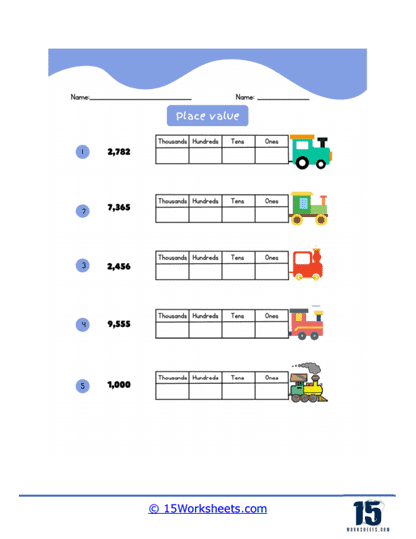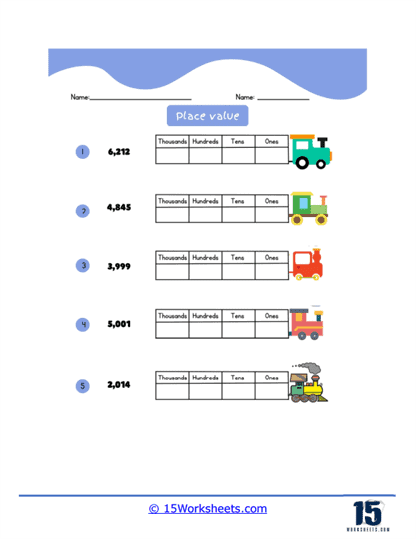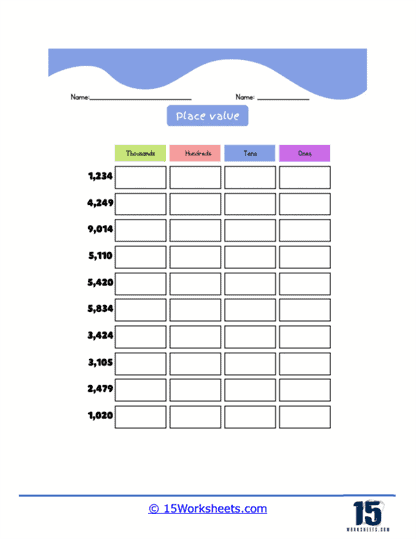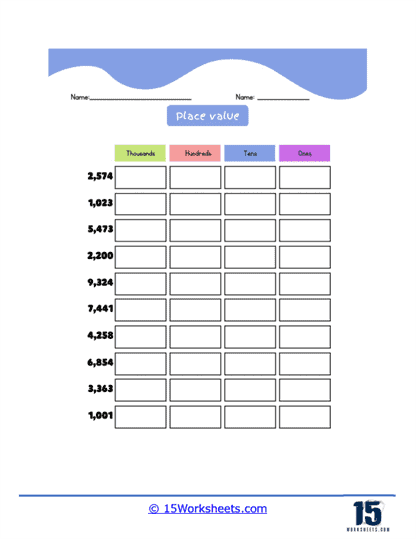Place Value Charts Worksheets
About These 15 Worksheets
The purpose of these worksheets is to help student understand the concept of place value in the decimal number system. These worksheets feature a table or “chart” that outlines each place value – ones, tens, hundreds, thousands, etc. These charts visualize how a number is made up of different values in each place.
What are Place Value Charts?
Place value charts are used to illustrate the position of digits in numbers and help explain the concept of the base-ten system. These charts have columns labeled with the place values in ascending order from right to left, such as ones, tens, hundreds, thousands, and so on. Each column is a power of ten greater than the one to its immediate right. Place value charts assist students in understanding that the value of a digit is determined by its position within a number.
Using place value charts can significantly improve math skills in several ways:
Conceptual Understanding – They provide a visual representation of the abstract concept of place value, making it easier for students to comprehend how numbers are structured and how each digit contributes to the overall value of a number.
Number Sense – Working with place value charts helps students develop a stronger number sense, which is the ability to recognize relationships between numbers and to work with them flexibly and confidently.
Arithmetic Skills – Understanding place value is essential for performing arithmetic operations, such as addition, subtraction, multiplication, and division. Place value charts make these operations more understandable, especially when they involve carrying over or borrowing.
Advanced Mathematical Concepts – A solid grasp of place value sets the stage for learning more advanced topics, such as decimals, percentages, and exponents. It allows students to transition smoothly into working with larger numbers and different number systems.
How Do You Complete Place Value Table?
To help you better understand this procedure we will place the number 5,739 on a place value chart.
Step 1) Identify Each Digit’s Place Value
In a standard decimal number system, the place values from right to left for whole numbers are: ones, tens, hundreds, thousands, and so on. Each place value is 10 times the place value to its right.
Applying this to our example, in the number 5,739, “9” is in the ones place, “3” is in the tens place, “7” is in the hundreds place, and “5” is in the thousands place.
Step 2) Place Values in Chart
Starting from the right (the ones place), fill in each column in the table with the corresponding digit from the number. Remember to move from right to left.
| Thousands | Hundreds | Tens | Ones |
| 5 | 7 | 3 | 9 |
This indicates that there is 5 thousands, 7 hundreds, 3 tens, and 9 ones in the number 5,739.
How Are These Helpful?
Place value tables, often used in math education, have a number of benefits, particularly when teaching young learners or anyone unfamiliar with the concept of place value. Here are a few of the key benefits:
Understanding Place Value – Place value is a fundamental concept in mathematics, especially in the decimal number system. Place value tables provide a visual aid to help learners understand that each digit in a number has a different value depending on its position or “place” within the number.
Visual Learning – By breaking down numbers into their individual parts, place value tables appeal to visual learners and make abstract concepts more concrete. Seeing a number in a table can help learners to better grasp how large numbers are structured.
Assisting with Operations – Understanding place value is essential for carrying out mathematical operations such as addition, subtraction, multiplication, and division. Place value tables can help learners perform these operations correctly, especially when carrying or borrowing is involved.
Preparation for Advanced Topics – Place value is a building block for more advanced mathematical topics, such as decimals, fractions, and algebra. By mastering place value, learners will be better equipped to handle these more complex concepts in the future.
Enhancing Number Sense – Working with place value tables can help learners develop a stronger sense of numbers, including an understanding of how numbers relate to each other and an ability to estimate or round numbers.
Error Detection and Correction – Mistakes in place value can lead to significant errors in mathematical calculations. By using a place value table, learners can more easily spot and correct these errors.

